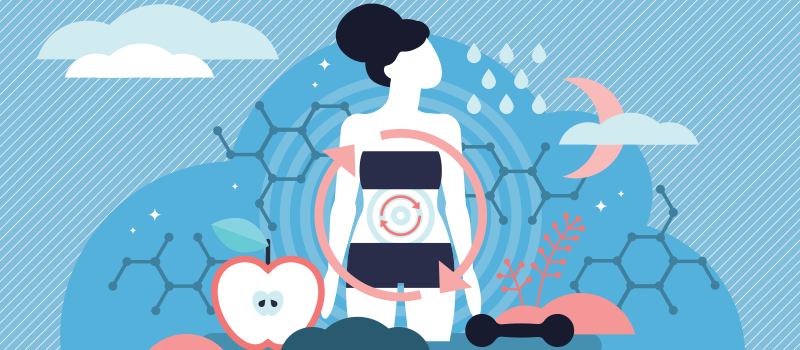What’s the Buzz
The Bee Healthy Blog
Can You Overdose On Vitamin C?

Vitamin C, also known as ascorbic acid, is an essential vitamin that can be found in a wide variety of citrus fruits and vegetables. It is important to get adequate dietary intake of this vitamin to maintain your immune function, prevent vitamin C deficiency, promote wound healing, sustain healthy bones, and enhance brain function.
While it is typically not harmful for generally healthy people to consume excessive amounts of vitamin C, doing so can lead to a variety of unpleasant side effects, ranging from relatively minor digestive issues to more serious health risks.
This article discusses the overall safety of vitamin C and the potential adverse effects of taking large doses of vitamin C.
What is vitamin C and its benefits?
Vitamin C is a water-soluble vitamin (dissolves in water). Unlike fat-soluble vitamins, which are easily stored in fats after absorption, water-soluble vitamins cannot be saved in the body for later use. Instead, vitamin C is carried to the tissues via the blood and lymph systems, with any excess being eliminated via the kidneys. In other words, vitamin C (and other water-soluble vitamins) gets absorbed directly into the bloodstream, and because a large portion of our bodies are made up of water, vitamin C moves around easily in the body. The excess levels are removed via the urine as the kidneys regulate the blood levels of water-soluble vitamins, including vitamin C.
Therefore, it is essential to consume vitamin C-rich foods on a regular basis because the body cannot synthesize or store vitamin C. However, “more is better” is not the case here. In most cases, well-balanced daily diets packed with food and vegetables would provide an adequate vitamin C supply that is necessary for normal body functions.
For example, vitamin C is needed for the formation of connective tissues, which include tendons, collagen, skin, ligaments, and even blood vessels. This explains the vital role of vitamin C in wound healing.
Vitamin C is shown to regenerate other antioxidants in the body, like vitamin E. Not to mention, vitamin C is known for its role in supporting the immune system. It is effective at boosting immune health to help fight against infection. This is the reason why people with a robust immune system get sick less often, and when they do, they tend to recover more quickly.
Reactive oxidative species (ROS) are free radicals in the body as the result of pollution and even regular body processes; antioxidants like vitamin C help eliminate ROS and prevent oxidative stress that can lead to cellular damage. Oxidative stress occurring in the body may contribute to the development of certain cancers.
Being an antioxidant with its ability to prevent oxidative stress, vitamin C’s role in cancer treatment is considered. The Iowa women’s health study investigated the association between vitamin A, C, and E and the risk of postmenopausal breast cancer. This study found that there is little evidence between breast cancer risk and the intake of these vitamins. While vitamin C may have a positive effect on cancer treatment, including breast cancer, there is no evidence to support this specific role of vitamin C.
Vitamin C’s antioxidant properties may also make this nutrient beneficial for heart health. However, there is not enough evidence to claim that vitamin C is cardioprotective and that taking vitamin C supplements will reduce cardiovascular disease mortality.
Similarly, more research is necessary to learn about vitamin C’s role in reducing the risk of cataracts and halt the progression of age-related macular degeneration.
How to get more vitamin C
Dietary intake
Getting enough vitamin C is essential. The best way to ensure sufficient vitamin C intake is through your diet. Fresh fruits and vegetables are the best sources of vitamin C. Vitamin C-rich foods include citrus fruits, tomatoes, potatoes, peppers, broccoli, strawberries, and brussels sprouts. It is recommended to eat five servings of fruits and vegetables, including enriched or fortified foods, daily to ensure you’re getting enough vitamin C.
Vitamin C supplements
If you’re struggling to get enough vitamin C through your diet, you can consider adding vitamin C supplements to your daily regimen. These supplements contain vitamin C in the form of ascorbic acid, which is also found in orange juice. Studies have shown that simple ascorbic acid is the preferred source of vitamin C supplementation.
Dangers of vitamin C deficiency
A vitamin C deficiency can lead to health conditions like scurvy. This is a rare condition uncommon for developed countries. Symptoms of scurvy include:
-
Fatigue and malaise
-
Inflamed or bleeding gums
-
Loss of teeth
-
Joint pain
-
Hyperkeratosis (rough patches of skin)
-
Iron deficiency anemia
While rare, some people are at a higher risk of a vitamin C deficiency, including:
Chronic disease patients
Certain chronic diseases can put someone at a higher risk of vitamin C deficiency, including:
-
Intestinal malabsorption
-
Certain cancers, like breast cancer
-
End-stage kidney disease or being on dialysis
If you are diagnosed with any of the above health conditions, talk to your doctor about ways you can ensure adequate intake of vitamin C.
Smokers
Those who smoke have lower leukocyte and plasma vitamin C levels than nonsmokers. This is partly due to oxidative stress. Therefore, it is estimated that smokers need about 35 milligrams (mg) more vitamin C per day than nonsmokers.
Individuals with poor diet
While vitamin C can be found in a lot of fruits and vegetables, those with a poor diet not containing vitamin C-rich foods are at a higher risk of vitamin C deficiency.
Dangers of too much vitamin C
Because vitamin C is one of the water-soluble vitamins, meaning it dissolves in water and cannot be stored in the body, severe side effects of too much vitamin C are rare. However, vitamin C toxicity can occur with high doses and can have adverse effects on the body.
Digestive Issues
The most common side effects of consuming large amounts of vitamin C are diarrhea and nausea. However, this issue is not typically associated with consuming dietary vitamin C but rather with the intake of excess vitamin C dietary supplements.
The tolerable upper intake levels for daily consumption are 2,000 mg. If your intake of vitamin C goes over 2,000 mg of vitamin C per day, digestive issues are more likely to occur.
If you are experiencing digestive issues due to excessive vitamin C intake, let your doctor know immediately. They will instruct you to either reduce the amount of vitamin C supplements you are taking or discontinue their use altogether.
Excess iron absorption
Vitamin C works to enhance iron absorption in the body. This unique property of vitamin C is considered an advantage. It is recommended to take an iron supplement with orange juice or a vitamin C supplement to maximize iron absorption.
While this doesn’t pose health risks in most individuals, people with hemochromatosis or other conditions that enhance iron absorption are at greater risk of iron buildup in the body and should use caution when taking vitamin C supplements. Excessive vitamin C intake in such circumstances can lead to iron overload, causing severe damage to vital organs, including the heart, causing coronary heart disease, and health risks to the blood vessels, liver, pancreas, thyroid, and central nervous system.
According to the results of one study, supplementing a meal with 100 milligrams of oral vitamin C resulted in a 67% increase in the body's absorption of iron.
Kidney stone formation
Urinary oxalate is a waste product produced in the body when there is an excess of vitamin C. Most of the time, oxalate is excreted from the body through urine. Oxalate can be harmless, but in high enough concentrations, it can bind to other minerals and form crystals, which can lead to kidney stone formation. The amount of oxalate adults excreted was found to increase by 20% after they took a 1,000 mg vitamin C supplement twice daily for six days.
Surpassing the recommended dietary allowance of 2,000 milligrams of vitamin C daily is associated with increased urinary oxalate levels, resulting in an increased risk of kidney stones and kidney injury. This risk is particularly significant for those with chronic kidney disease.
In rare cases, kidney failure has been reported in individuals who consume more than 2,000 mg of vitamin C daily. However, this occurrence is infrequent, especially in individuals who are otherwise in good health.
Vitamin C drug interactions
Vitamin C typically only interacts with other medications when taken as a supplement. When relying on dietary intake of vitamin C alone, these drugs should be safe. However, be sure to give your doctor a complete list of your medications, including prescription drugs, over-the-counter medications, dietary supplements, and herbal products, before starting any new drugs.
Chemotherapy and radiation therapy
The interactions between vitamin C and other antioxidant supplements while receiving chemotherapy or radiation therapy are not well understood. Therefore, it’s important that you consult with your health professionals about the risks of combining vitamin C supplements, antioxidant supplements, and cancer treatments.
Statins
Taking vitamin C supplements in combination with other antioxidants can have a negative effect on patients undergoing statin therapy. Health professionals should monitor your lipid levels closely while you are taking both vitamin C and statins.
What are healthy vitamin C levels?
Consuming excessive amounts of vitamin C does not typically pose significant health risks because it is water-soluble, and the body excretes any excess within a few hours of ingestion. In fact, the likelihood of consuming too much vitamin C solely through one's diet is extremely low. In healthy individuals, any vitamin C intake that exceeds the recommended dietary allowance is eliminated from the body.
The Food and Nutrition Board (FNB) has established the Vitamin C intake recommendations for healthy people. The recommended amounts are outlined below:
-
Recommended dietary allowance (RDA): This is the average daily intake of vitamin C that meets the nutrient intake requirement. For healthy adults, this is 75 mg per day for men and 90 mg per day for women.
-
Tolerable Upper Levels (UL): This is the maximum daily intake before the possibility of serious adverse effects. For the average healthy adult, this is 2,000 mg daily.
Reaching the Tolerable Upper Intake Levels (UL) for vitamin C would require consuming the equivalent of 25 oranges or 14 red bell peppers.
Those who are predisposed to developing kidney stones or who have a condition that increases the risk of iron overload should regularly monitor and reduce their vitamin C intake. Vitamin C's negative effects, like stomach upset and kidney stones, typically manifest at doses of 2,000 milligrams or higher.
Conclusion
The vast majority of people can safely consume vitamin C without any significant risk. This is particularly true when the vitamin is obtained through natural dietary sources or fortified foods rather than in supplement form. People who opt for vitamin C supplements have a slightly higher risk of overdosing and experiencing various adverse effects, with digestive issues being the most common.
Excessive vitamin C intake can lead to serious adverse effects, including iron accumulation in the body and the formation of kidney stones. Fortunately, these potentially harmful effects can be easily avoided by refraining from high-dose vitamin C supplements.
In most cases, individuals do not require substantial vitamin C supplementation unless they have a deficiency, which is uncommon in healthy adults since the body absorbs an adequate amount of vitamin C on its own.
References












SOCIAL